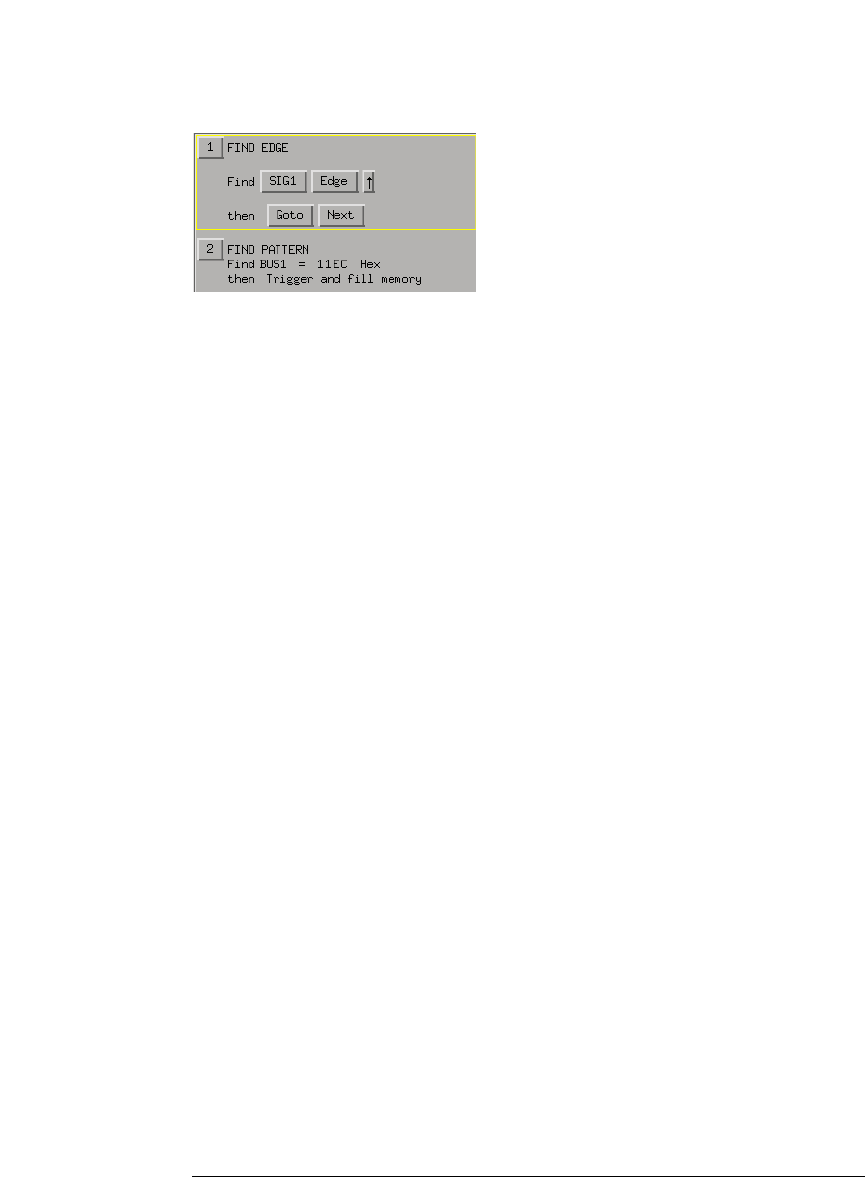User's Manual
Table Of Contents
- Agilent Technologies 16750A/B Logic Analyzer
- Agilent Technologies 16750A/B Logic Analyzer
- Contents
- Getting Started
- Step 1. Connect the logic analyzer to the device under test
- Step 2. Choose the sampling mode
- Step 3. Format labels for the probed signals
- Step 4. Define the trigger condition
- Step 5. Run the measurement
- Step 6. Display the captured data
- For More Information...
- Example: Timing measurement on counter board
- Example: State measurement on counter board
- Task Guide
- Probing the Device Under Test
- Choosing the Sampling Mode
- To select transitional timing or store qualified
- Formatting Labels for Logic Analyzer Probes
- Setting Up Triggers and Running Measurements
- Displaying Captured Data
- Using Symbols
- Printing/Exporting Captured Data
- Cross-Triggering
- Solving Logic Analysis Problems
- Saving and Loading Logic Analyzer Configurations
- Reference
- The Sampling Tab
- The Format Tab
- Importing Netlist and ASCII Files
- The Trigger Tab
- The Symbols Tab
- Error Messages
- Must assign Pod 1 on the master card to specify actions for flags
- Branch expression is too complex
- Cannot specify range on label with clock bits that span pod pairs
- Counter value checked as an event, but no increment action specified
- Goto action specifies an undefined level
- Maximum of 32 Channels Per Label
- Hardware Initialization Failed
- Must assign another pod pair to specify actions for flags
- No more Edge/Glitch resources available for this pod pair
- No more Pattern resources available for this pod pair
- No Trigger action found in the trace specification
- Slow or Missing Clock
- Timer value checked as an event, but no start action specified
- Trigger function initialization failure
- Trigger inhibited during timing prestore
- Trigger Specification is too complex
- Waiting for Trigger
- Analyzer armed from another module contains no "Arm in from IMB" event
- Specifications and Characteristics
- Concepts
- Understanding Logic Analyzer Triggering
- Understanding State Mode Sampling Positions
- Getting Started
- Glossary
- Index

206
Chapter 4: Concepts
Understanding Logic Analyzer Triggering
“Find Edge” and “Find Pattern” together
Next: “Setting Up Complex Triggers” on page 206
Setting Up Complex Triggers
Frequently, the most difficult part of setting up a complex trigger is
breaking down the problem. In other words, how do you map a
complex trigger into sequence levels, branches, and Boolean
expressions? Here are step by step instructions:
1. Break down the problem into events that don't happen simultaneously.
These correspond to the sequence levels.
2. Scan the list of trigger functions to try to find some that match the events
identified in Step #1.
3. Within all remaining events, break them down into Boolean expressions
and their corresponding actions. Each Boolean expression/Action pair
corresponds to a separate branch within a sequence level. Remember that
“Store” branches may exist that are used only to handle storage
qualification for that sequence level.
Next: “Document Your Trigger Sequences” on page 206
Document Your Trigger Sequences
If a trigger sequence is important at one time, it is likely to be
important again. This is why documenting trigger sequences is so
valuable. Complex trigger sequences generally are too difficult to
understand without some accompanying explanation. The following
figure shows an example of the inline documentation on an Agilent
Technologies logic analyzer. Inline means that the documentation is
included in the trigger definition itself. This allows you to document










